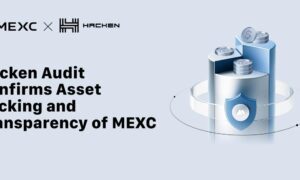Commuting used to be something we endured. Crowded buses, endless traffic, and the occasional dash for the last parking spot were all just part of the daily grind. But companies are starting to see mobility through a different lens. Not as an expense, but as an opportunity. From electric shuttles to app-driven car-pooling, technology is reshaping how employees move, meet, and manage their time. The question isn’t whether businesses will adopt smarter transport solutions, but how quickly they’ll realise just how much those changes can do for productivity, sustainability, and staff happiness.
Corporate mobility has changed more in the past five years than in the previous two decades. Hybrid work, sustainability targets, and the rising cost of urban commuting have forced businesses to think differently about how employees get from A to B. Instead of seeing transport as a fixed cost, companies are beginning to treat it as a strategic lever — one that affects everything from productivity to brand reputation.
Digital Car-Pooling And Shuttle Platforms Lead The Shift
Modern corporate transport solutions aren’t about diesel buses idling in the parking lot anymore. They’re about digital scheduling, data-driven route optimisation, and user-friendly mobile apps that connect employees directly with real-time shuttles or car-pooling options. These systems reduce empty seats, cut fuel consumption, and create smoother daily routines for staff who’d otherwise spend hours in traffic.
The most forward-thinking organisations are integrating these solutions into broader sustainability programs. They track emissions saved, measure participation rates, and even reward staff who opt for greener commutes. It’s a far cry from the clipboard era of company buses — and it’s proof that technology, when applied well, can make the workday feel shorter before it even begins.
How Smarter Corporate Transport Solutions Are Transforming Employee Commutes
Companies exploring large-scale commuter services are starting to look at charter bus and shuttle partnerships that go beyond basic transportation. Many of these initiatives use connected systems that provide insights into vehicle utilisation, driver performance, and energy efficiency.
In fact, smart-mobility technologies are quickly becoming the bridge between cost control and employee wellbeing. Real-time route mapping, predictive maintenance, and AI-based occupancy models can transform an ageing fleet into a responsive, on-demand service. Data analytics is already cutting downtime and improving scheduling accuracy for large organisations.
When employees feel that their time and comfort are valued, retention improves. It’s not a luxury perk anymore; it’s part of a company’s operational DNA.
Why Businesses Are Taking Corporate Commutes Seriously
This isn’t just a passing sustainability trend. The Business Research Company reports that the global corporate employee transportation market is on track to reach USD 52.68 billion by 2029, growing at 8.2 percent annually. That growth reflects a broader shift in priorities: companies now see transport as a way to attract talent, meet ESG benchmarks, and save money at the same time.
Multinational firms are already testing carbon-neutral shuttle services powered by biofuels or electric fleets. Others are rethinking parking infrastructure altogether, converting spaces into drop-off zones for shared rides and e-bikes. For HR and facilities teams, this is a new frontier where mobility policy intersects with employee experience design.
Another driving force behind this shift is employee demand. Workers who once accepted long, inefficient commutes are now vocal about wanting greener, safer, and more predictable travel options. In competitive sectors like tech and finance, mobility programs have become part of recruitment pitches. Offering company-sponsored shuttles or car-pooling perks signals that management understands real-world stress points and values people’s time; a small gesture that pays off in loyalty and morale.
How To Build A Smarter Transport Strategy
Creating a modern corporate transport framework starts with data. Understanding when, where, and how employees travel allows companies to tailor services instead of guessing at needs. Pilot programs with flexible routes can quickly show which schedules make the biggest impact.
Partnerships are another piece of the puzzle. By collaborating with local transit authorities and mobility-as-a-service providers, businesses can weave private and public networks into a single ecosystem. The best systems give employees options like taking bus or shuttle, riding a bike, or participating in a car-pool, while providing employers with metrics that translate directly into cost and carbon savings.
Finally, communication matters. Even the most sophisticated system will fail if people don’t know how to use it. Successful rollouts often include app tutorials, incentives for early adopters, and a feedback loop to fix pain points fast. This is truly the future of transport!
The Road Ahead
Corporate mobility is moving from logistics to lifestyle. In an era defined by hybrid schedules and climate commitments, the companies that master their commuting infrastructure will hold a quiet but powerful edge: less wasted time, lower emissions, and happier employees. Smart technology, data transparency, and sustainable design aren’t optional upgrades anymore — they’re the new baseline for how we move to work.



































